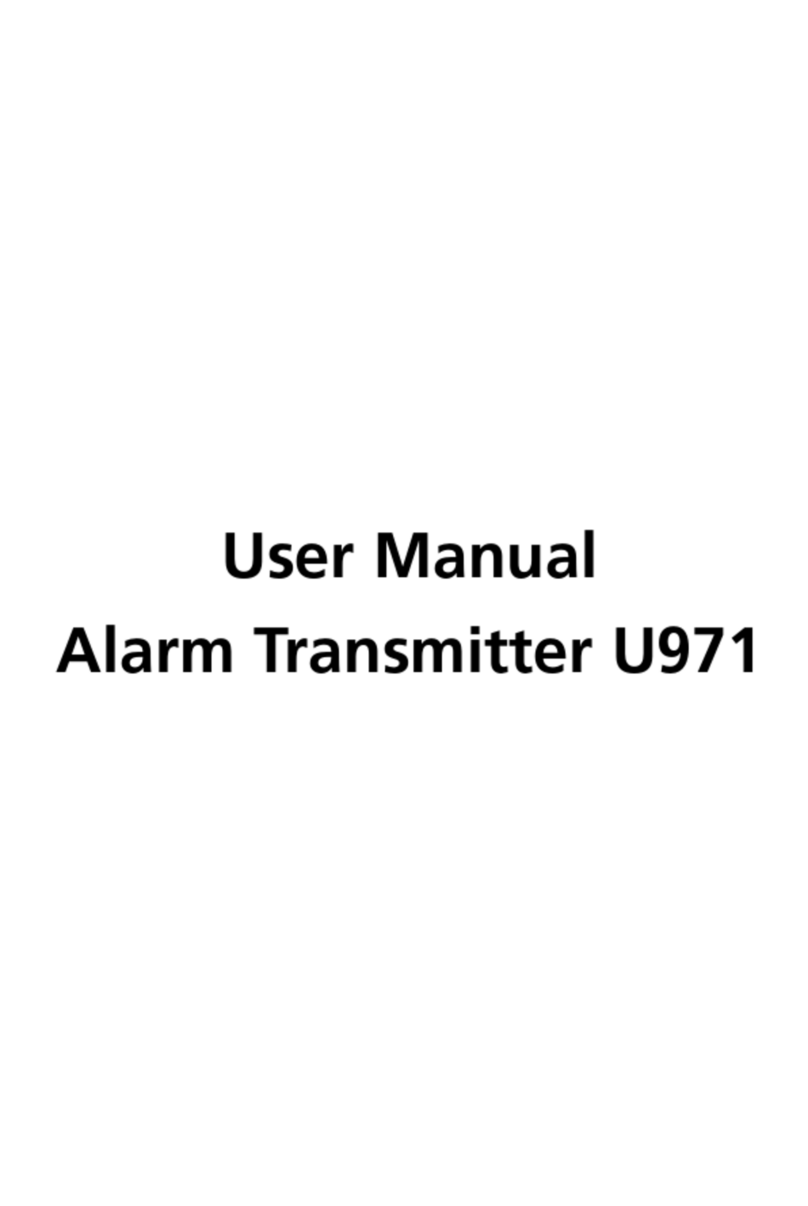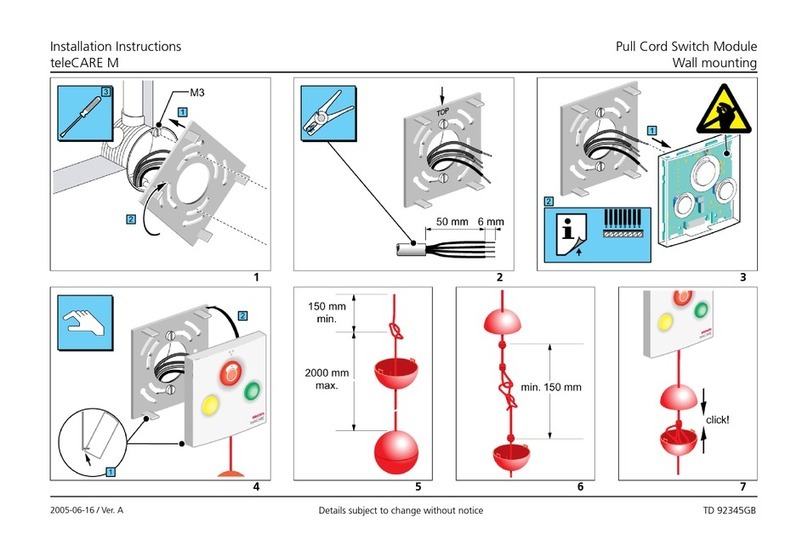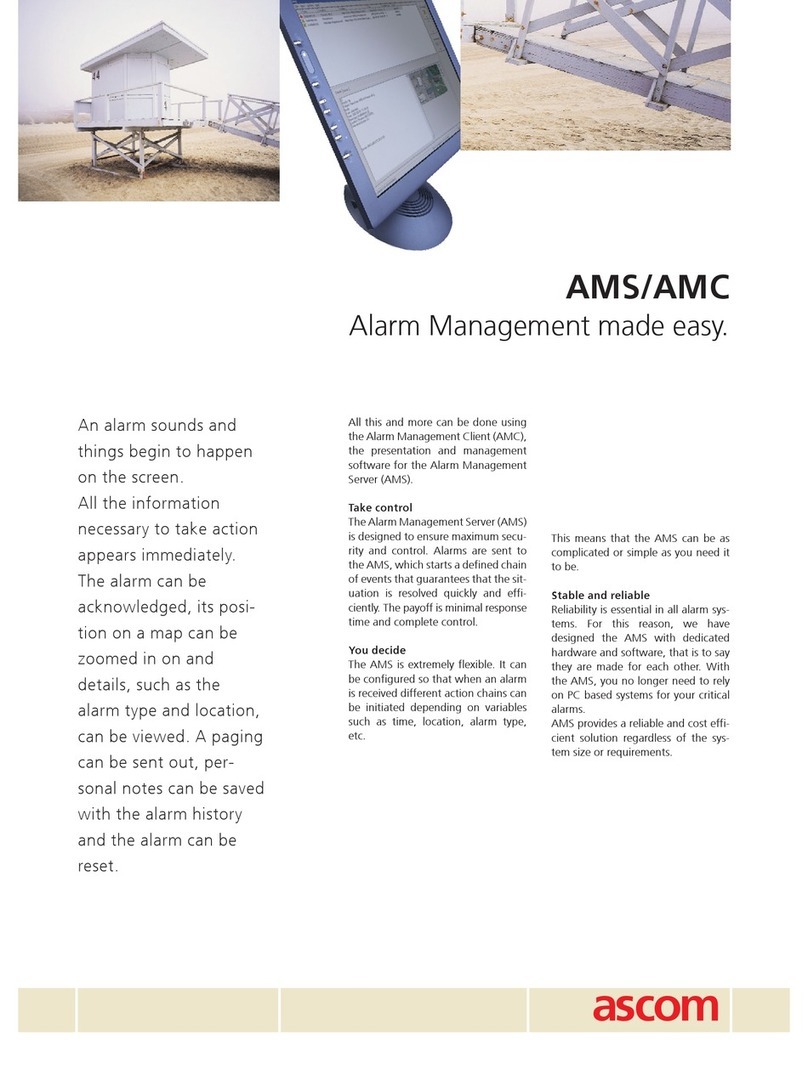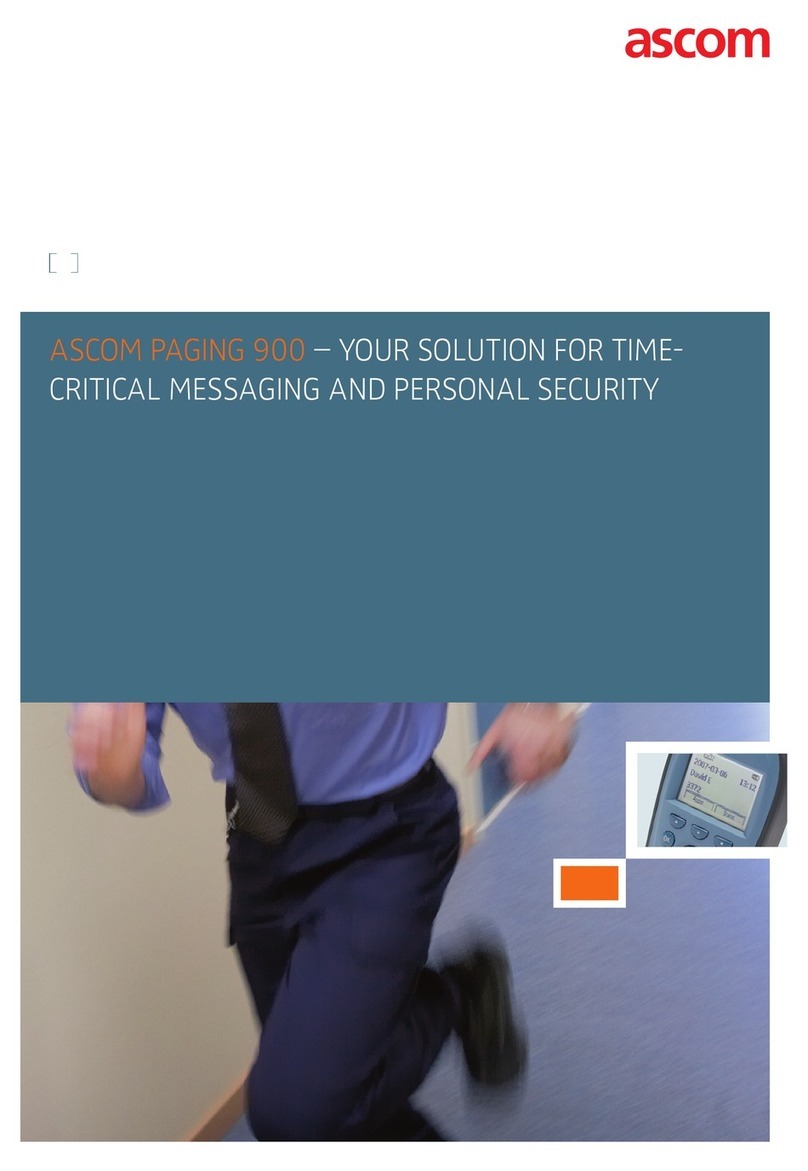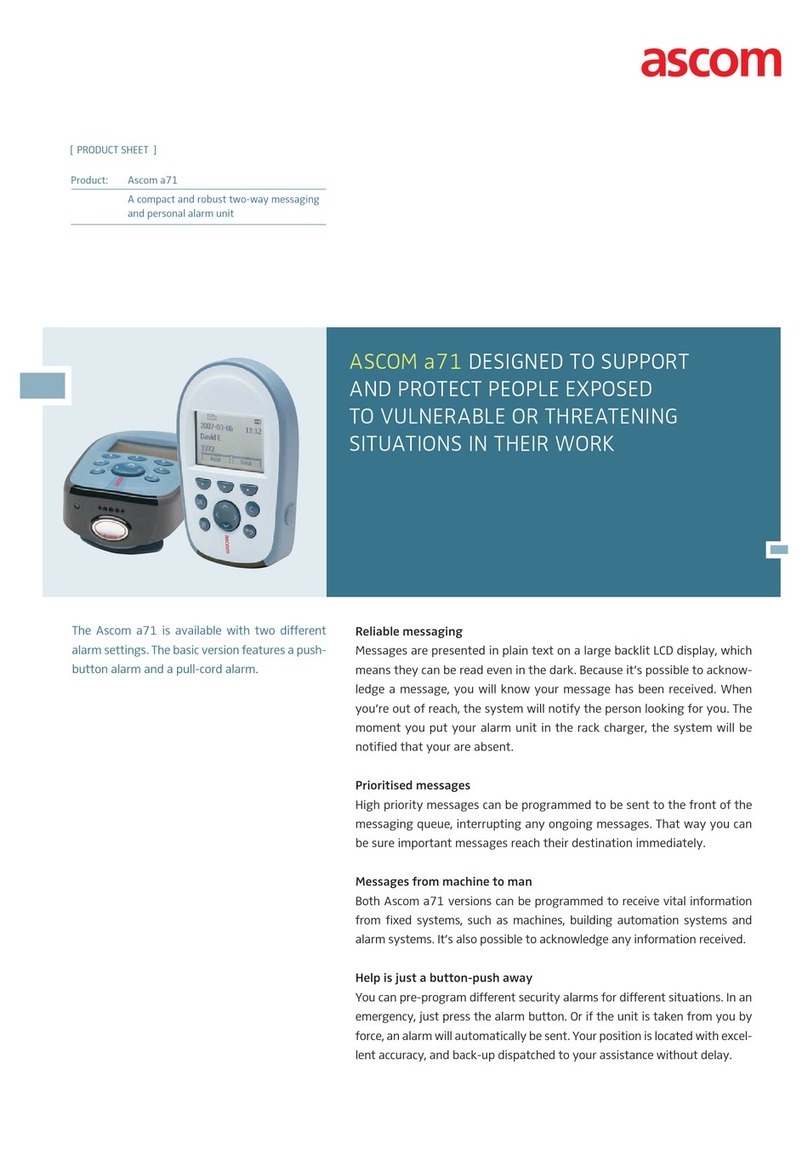
TD 90227GB
2006-09-18/ Ver. C
System Installation
On Site Paging System
3
1.8 Extended Wiring Lengths
If max wiring lengths of the data buses A, B, C and D exceed 3000 m, or if there are more
than 32 units on a bus, the data bus signal must be amplified. On private lines the Bus
Converter is used, and on leased lines (or very long private lines) the Data Modem is used.
If max wiring length of the SP-bus and R-line exceeds 500 m respectively 1000 m, the Bus
Amplifier is used for 1-way speech transmission on private lines and the Speech Modem is
used for 2-way transmission on leased lines.
If max wiring length of the FL-bus exceeds 3000 m the Bus Amplifier is used.
Line Equipment
• Bus Converter T938BC2, for A-, B-, C- and D-bus on private lines.
• Data Modem T938D, for A-, B-, C- and D-bus on leased lines and for very long private
lines.
• Bus Amplifier T938BA, for 1-way transmission on private lines.
• Speech Modem T938S, for 2-way speech transmission on leased lines.
2 Telephone and PBX Connection
A telephone set or a PBX can be used as control unit via a PBX Interface module.
The PBX Interface accepts both dialling pulses and DTMF tones and can be connected to
either trunk or extension lines. It communicates with other OSP modules via the A-bus and
the SP-bus if speech is desired.
PBX
Figure 1. Telephone set or PBX can be connected to the PBX Interface.
Note that additional PBX hardware and/or software may be required to use all functions of
the paging system.
3 Transmitters
There are two types of transmitters; Terminal and Slave transmitters. The Terminal
transmitter(s), is controlled by the Central Unit and receives pagings in transmit format on
the D-bus. Slave transmitters are used to increase coverage in installations where coaxial
cable from the driving transmitter can be run without too much difficulty.
The D-bus is electrically identical with the A-bus, i.e. maximum 32 units connected with
twisted-pair wiring with a maximum total length of 3 kilometres. If speech is used, the SP-
bus must be connected to the terminal transmitters. Note that the total length of the SP-












